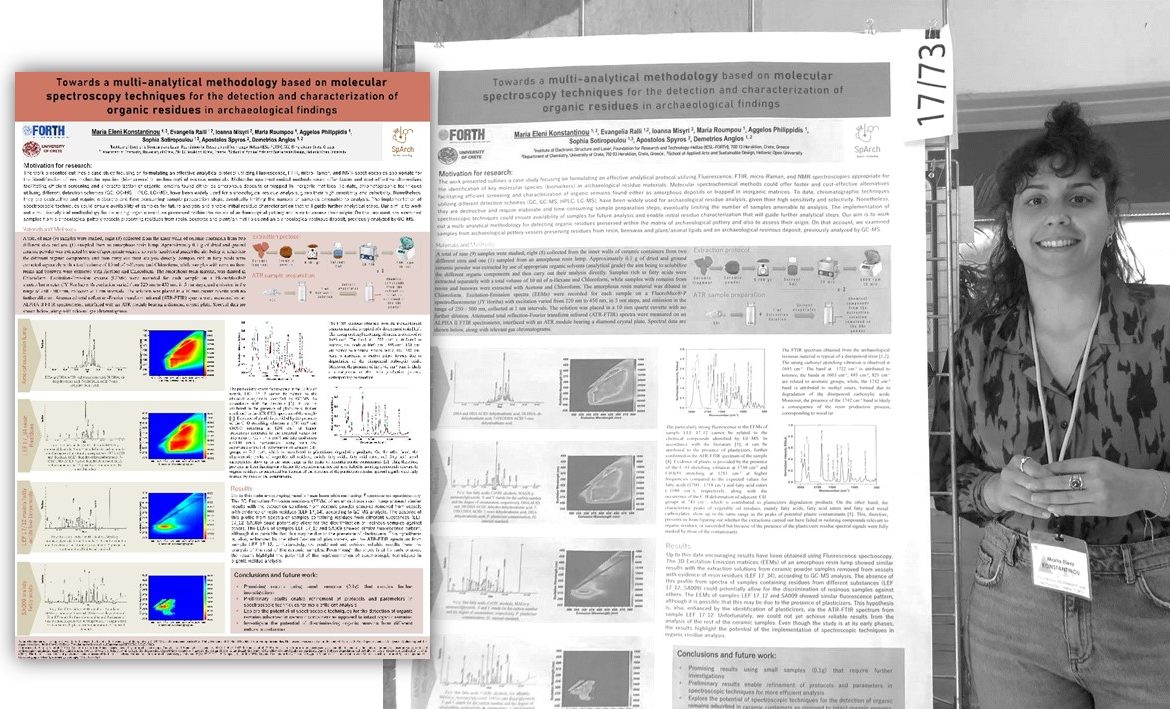Poster presentation at the XXIVth Congress of GMPCA: Archeometry 2023
Our work “Towards a multi-analytical methodology based on molecular spectroscopy techniques for the detection and characterization of organic residues in archaeological findings” has been recently presented at the XXIVth Congress of GMPCA: Archeometry 2023 by Maria Eleni Konstantinou.
This poster, also co-authored by Evangelia Ralli, Ioanna Misyri, Maria Roumpou, Aggelos Philippidis, Sophia Sotiropoulou, Apostolos Spyros, and Demetrios Anglos, reflects research performed at PhoHS of IESL-FORTH, in collaboration with the NMR laboratory, Dept. of Chemistry, University of Crete and the Hellenic Open University in the framework of SpArch (Spectrochemical Analysis of Archaeological Bio-organic residues) project.
The work presented outlines a case study focusing on formulating an effective analytical protocol utilizing Fluorescence, FTIR, micro-Raman, and NMR spectroscopies appropriate for the identification of key molecular species (biomarkers) in archaeological residue materials. Molecular spectrochemical methods could offer faster and cost-effective alternatives facilitating efficient screening and characterization of organic remains found either as amorphous deposits or trapped in inorganic matrices. To date, chromatographic techniques utilizing different detection schemes (GC, GC-MS, HPLC, LC-MS), have been widely used for archaeological residue analysis, given their high sensitivity and selectivity. Nonetheless, they are destructive and require elaborate and time-consuming sample preparation steps, eventually limiting the number of samples amenable to analysis. The implementation of spectroscopic techniques could ensure the availability of samples for future analysis and enable initial residue characterization that will guide further analytical steps. We aim to work out a multi-analytical methodology for detecting organic residues preserved within the archaeological pottery matrix and assess their origin. On that account, we examined samples from archaeological pottery vessels preserving residues from resin, beeswax, and plant/animal lipids and an archaeological resinous deposit, previously analyzed by GC-MS.
SPARCH


